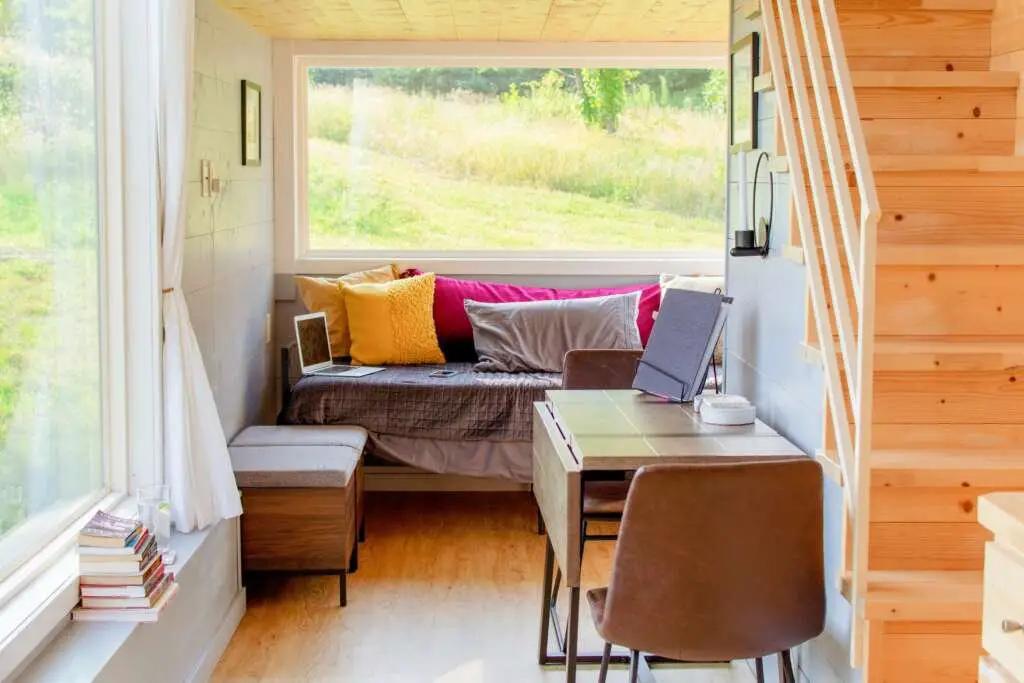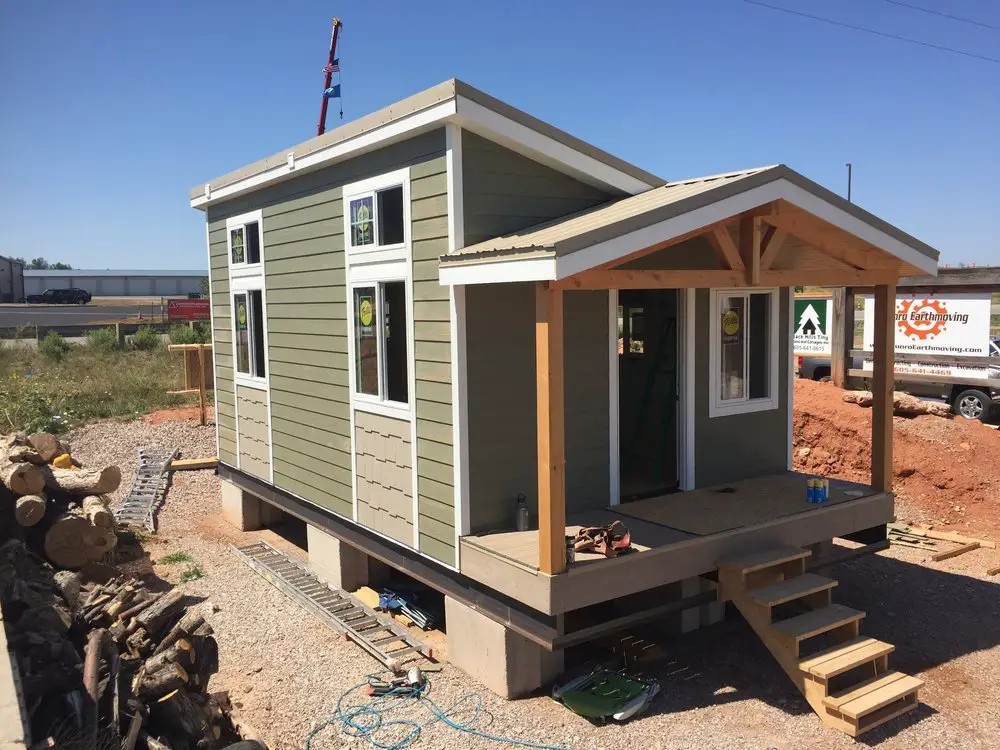Curious about the legality of tiny homes in South Dakota? Look no further. This article presents a concise overview of the regulations surrounding these compact dwellings in the state. Discover whether you can make your dreams of living in a tiny home a reality in South Dakota.
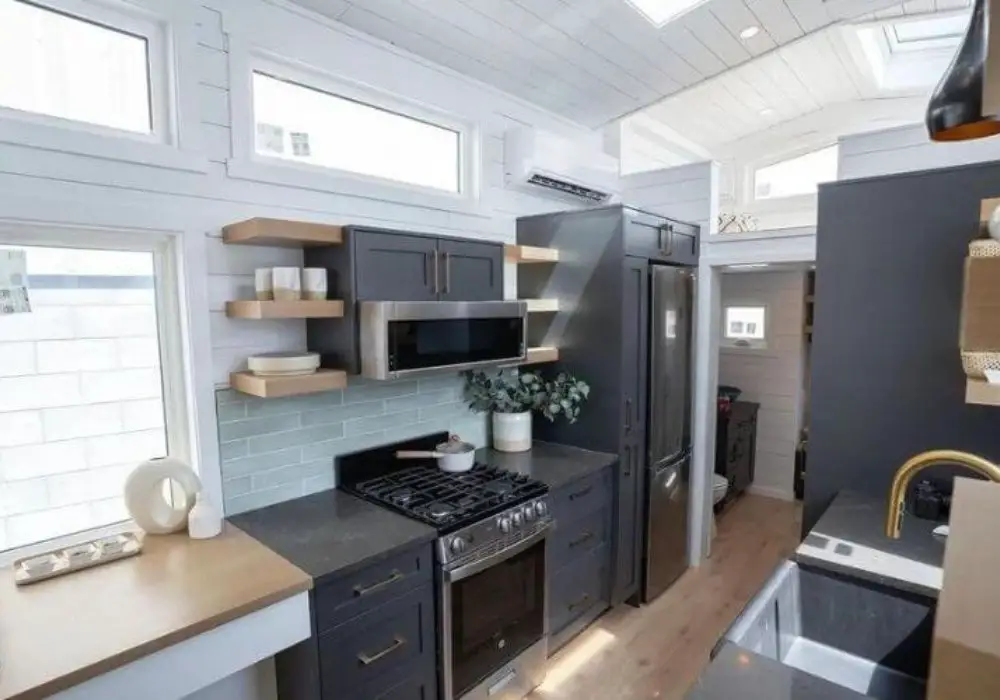
Zoning Regulations for Tiny Homes in South Dakota
Understanding the Basics
When it comes to zoning regulations for tiny homes in South Dakota, it’s important to have a clear understanding of the basic principles. Zoning regulations dictate how land can be used and what can be built on it. These regulations are established by local government authorities to ensure orderly and planned development within a given area. Understanding these regulations is crucial for anyone considering building or living in a tiny home in South Dakota.
Definitions and Requirements
In South Dakota, the definition of a tiny home can vary depending on the local jurisdiction. Generally, a tiny home is classified as a dwelling unit that is smaller than the average traditional home. However, specific requirements such as square footage and design features may differ from one jurisdiction to another. It’s important for individuals interested in tiny homes to check with their local government for the specific definition and requirements in their area.
Types of Zoning Regulations
Zoning regulations for tiny homes in South Dakota typically fall into three main categories: residential, agricultural, and recreational. Residential zoning regulations are the most common and cover areas designated for permanent housing. Agricultural zoning regulations pertain to areas primarily used for farming and ranching, and may have specific requirements for tiny homes used for agricultural purposes. Recreational zoning regulations are often found in recreational or vacation areas, and may have restrictions on year-round occupancy. Understanding the different types of zoning regulations can help individuals determine where they can legally place their tiny homes in South Dakota.
Building Codes for Tiny Homes in South Dakota
Applicable Codes
When it comes to building codes for tiny homes in South Dakota, there are a few key codes that may apply. The International Residential Code (IRC) and the International Building Code (IBC) are widely adopted in various jurisdictions across the state. These codes set standards for safety, construction, and design aspects of buildings, including tiny homes. It’s important for individuals building tiny homes in South Dakota to ensure compliance with these codes to ensure the safety and structural integrity of their homes.
Minimum Square Footage
South Dakota does not have a specific minimum square footage requirement for tiny homes. However, some local jurisdictions may have their own regulations regarding minimum square footage for dwellings. It’s crucial to check with the local building department or zoning authority to determine any specific requirements regarding the size of a tiny home.
Safety and Structural Requirements
Building codes in South Dakota ensure that tiny homes meet safety and structural requirements. This includes regulations for electrical systems, plumbing, fire safety, and structural integrity. It’s important for individuals building or purchasing a tiny home to work with professionals who understand these requirements and can ensure compliance during the construction process.
Permits and Inspections for Tiny Homes in South Dakota
Permitting Process
Obtaining the necessary permits is an essential step in the process of building or placing a tiny home in South Dakota. The specific permitting process can vary depending on the jurisdiction. Generally, it involves submitting necessary documents such as building plans, specifications, and any other required paperwork to the local building department. It’s important to consult with the local authorities to understand the specific requirements and fees associated with permits.
Inspection Requirements
Inspections play a vital role in ensuring that tiny homes in South Dakota are built safely and meet the necessary standards. Inspections typically occur at different stages of the construction process, such as foundation, framing, electrical, plumbing, and final inspections. Hiring a qualified inspector or working with the local building department is crucial to ensure compliance with inspection requirements.
Costs and Fees
When it comes to permits and inspections for tiny homes in South Dakota, there are costs and fees involved. The exact amount can vary depending on the jurisdiction and the scope of the project. It’s important to budget for these costs and fees when considering building or placing a tiny home in South Dakota. Consulting with local authorities and professionals can provide a clear understanding of the potential costs and fees associated with permits and inspections.
Challenges and Limitations for Tiny Homes in South Dakota
Lack of Awareness and Understanding
One of the main challenges for tiny homes in South Dakota is the lack of awareness and understanding. Many people are unfamiliar with the concept of tiny homes and may have misconceptions about their feasibility and legality. Increasing awareness and educating the public about the benefits and potential of tiny homes can help address this challenge.
Resistance from Traditional Housing Industry
The traditional housing industry may view tiny homes as a potential threat to their business. There may be resistance and opposition from developers, contractors, and other industry stakeholders who see tiny homes as competition. Overcoming this resistance and fostering collaboration between the traditional housing industry and the tiny home movement can contribute to the growth and acceptance of tiny homes in South Dakota.
Limited Communities and Land Availability
Finding suitable communities and available land for tiny homes in South Dakota can be challenging. Some neighborhoods and municipalities may have strict zoning regulations that restrict the use of tiny homes or require them to be placed in designated communities. Additionally, finding affordable land that meets all the necessary requirements and is accessible to amenities can be a limiting factor for those interested in living in a tiny home in South Dakota.
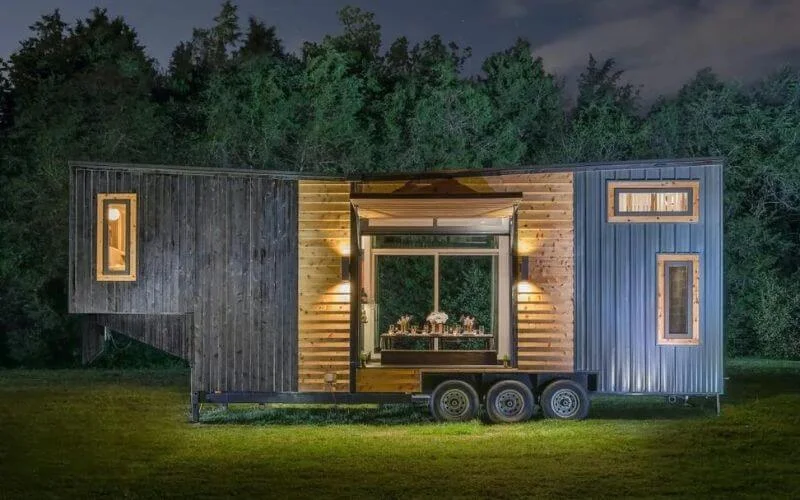
Advocacy and Support for Tiny Homes in South Dakota
Organizations and Movements
Various organizations and movements in South Dakota are advocating for the acceptance and recognition of tiny homes. These groups work to promote understanding, provide resources, and connect individuals interested in tiny homes. They play a crucial role in fostering a supportive community for tiny home enthusiasts and ensuring that their interests are represented.
Policy Initiatives
Policy initiatives at the local, state, and national levels can have a significant impact on the acceptance and regulation of tiny homes in South Dakota. Advocacy efforts aim to influence policy changes that address zoning regulations, building codes, and other barriers that may inhibit the development and growth of tiny homes. Engaging with policymakers and supporting initiatives that promote sustainable and affordable housing solutions can lead to positive changes for the tiny home movement in South Dakota.
Educational Resources
Educational resources are essential for individuals interested in tiny homes in South Dakota. These resources provide information on the legal aspects, building codes, financing options, and other considerations related to tiny homes. Online platforms, workshops, and community events offer opportunities for individuals to learn more and connect with others who share similar interests. Access to educational resources can help individuals make informed decisions and navigate the complexities of tiny home living in South Dakota.
Case Studies of Tiny Home Owners in South Dakota
Success Stories and Lessons Learned
Case studies of tiny home owners in South Dakota showcase success stories and lessons learned from individuals who have built or lived in tiny homes. These stories provide valuable insights into the practicalities, challenges, and rewards of tiny home living in the state. Hearing from those who have already embarked on the journey of owning a tiny home can inspire and guide others who are considering this lifestyle.
Overcoming Obstacles
Case studies also shed light on the various obstacles that tiny home owners in South Dakota have had to overcome. From zoning challenges to financing hurdles, these stories highlight the determination and resourcefulness required to make a tiny home dream a reality. Understanding how others have navigated these obstacles can empower individuals to find creative solutions and persevere in their own tiny home journey.
Living Off the Grid
Some tiny home owners in South Dakota choose to live off the grid, embracing sustainable and self-sufficient lifestyles. These individuals provide inspiration and examples of eco-friendly practices, such as using renewable energy sources, composting toilets, and rainwater harvesting systems. Their experiences demonstrate the possibilities of sustainable living in a tiny home and the benefits it can bring to individuals and the environment.
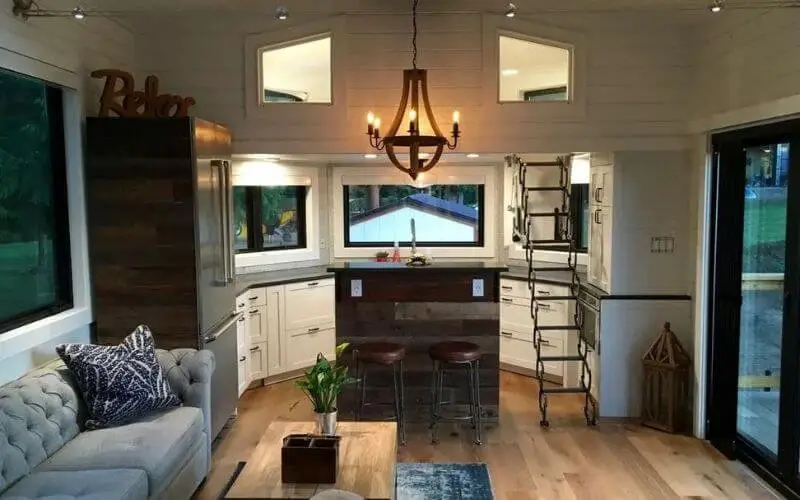
Financing Options for Tiny Homes in South Dakota
Traditional Mortgage Lenders
Traditionally, securing financing for a tiny home in South Dakota can be challenging. Many mortgage lenders have strict requirements that may not align with the unique nature of tiny homes. However, some individuals have successfully obtained traditional mortgage loans by working closely with lenders who are open to financing unconventional housing options like tiny homes. It’s crucial to research and approach lenders who have experience or a willingness to work with tiny home buyers.
Specialized Tiny Home Lenders
In recent years, specialized lenders catering specifically to the tiny home market have emerged. These lenders understand the needs and challenges of financing tiny homes and offer tailored loan options. Working with specialized tiny home lenders can streamline the financing process, increase the chances of approval, and provide customized solutions for potential buyers in South Dakota.
Alternative Financing Methods
In addition to traditional mortgage lenders and specialized tiny home lenders, there are alternative financing methods available for individuals interested in tiny homes in South Dakota. These methods include personal loans, RV loans, crowdfunding, and owner financing. Exploring these alternative options can provide flexibility and additional possibilities for financing a tiny home.
Insurance Coverage for Tiny Homes in South Dakota
Homeowners Insurance
Obtaining homeowners insurance is crucial for protecting a tiny home in South Dakota. While coverage options for tiny homes may vary among insurance providers, it’s important to find a policy that meets the unique needs of a tiny home owner. Homeowners insurance typically covers property damage, theft, liability, and personal belongings. Contacting insurance companies that specialize in tiny homes or working with an insurance broker can help individuals find appropriate coverage for their tiny homes in South Dakota.
Specialized Tiny Home Insurance
Some insurance companies offer specialized insurance policies specifically designed for tiny homes. These policies are tailored to provide coverage and protection that align with the unique characteristics and risks associated with tiny homes. As the tiny home movement grows, more insurance companies are recognizing the need for specialized coverage options that cater to the needs of tiny home owners in South Dakota.
Liability Coverage
Liability coverage is an essential aspect of insurance for tiny homes in South Dakota. Accidents, injuries, and property damage can occur, and liability coverage helps protect the homeowner from potential legal and financial consequences. It’s important to work with an insurance provider who understands the nuances and specific requirements of liability coverage for tiny homes.
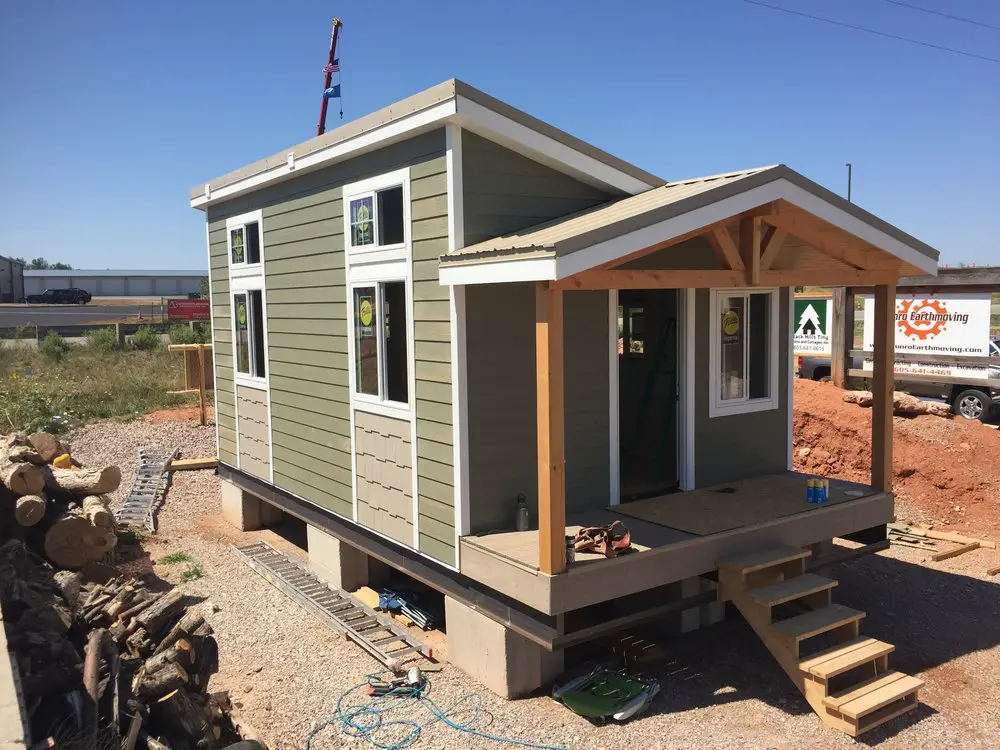
Renting and Owning Tiny Homes in South Dakota
Rental Regulations and Opportunities
Renting a tiny home in South Dakota is subject to local rental regulations, which may vary across different jurisdictions. Some municipalities may have specific requirements for rental properties, including noise regulations, occupancy limits, and health and safety standards. Potential renters should familiarize themselves with local rental regulations and work with landlords who are knowledgeable about these regulations to ensure a smooth renting experience.
Ownership Options and Considerations
Owning a tiny home in South Dakota offers individuals the opportunity for affordable and sustainable homeownership. However, it’s important to consider various factors before making the decision to own a tiny home. Considerations include land availability, zoning regulations, financing options, maintenance responsibilities, and the lifestyle changes that come along with tiny home living. Careful research and planning are necessary to ensure that owning a tiny home aligns with personal goals and preferences.
Legal Responsibilities
Both renters and owners of tiny homes in South Dakota have legal responsibilities that must be adhered to. Renters are typically responsible for abiding by the terms of their rental agreement, maintaining the property, and following any local regulations pertaining to rental properties. Owners are responsible for complying with zoning regulations, building codes, and any other legal requirements for their tiny homes. Understanding and fulfilling these legal responsibilities is essential for a smooth and legally compliant experience with a tiny home in South Dakota.
Future Outlook for Tiny Homes in South Dakota
Trends and Growth Potential
The future outlook for tiny homes in South Dakota is filled with potential. As the demand for affordable and sustainable housing options continues to grow, tiny homes offer a viable solution. The flexibility, cost-effectiveness, and eco-friendly nature of tiny homes align with the changing preferences and needs of individuals and communities. It is expected that the popularity of tiny homes will continue to rise, leading to an increase in both the number of tiny homes and the acceptance of this housing option in South Dakota.
Government and Community Support
Government and community support play a crucial role in the future of tiny homes in South Dakota. As more individuals express interest in tiny homes, it is important for local authorities to recognize and address the needs and concerns of this growing movement. Collaborative efforts between government agencies, builders, organizations, and the community can create a supportive environment for the development and acceptance of tiny homes.
Sustainable Housing Solutions
Tiny homes offer an opportunity for sustainable housing solutions in South Dakota. With a smaller ecological footprint, reduced energy consumption, and potential for off-grid living, tiny homes align with the goals of environmental conservation and sustainability. The integration of renewable energy sources, water conservation methods, and eco-friendly materials in tiny home design can contribute to a more sustainable future for the housing sector in South Dakota and beyond.
In summary, zoning regulations, building codes, permits, and inspections form the foundation for legal and safe tiny home living in South Dakota. Overcoming challenges and limitations through advocacy, education, and support can pave the way for increased acceptance and recognition of tiny homes in the state. Financing options, insurance coverage, and rental and ownership considerations provide individuals with the necessary tools to navigate the financial and legal aspects of tiny home living. With the right support and collaboration, the future of tiny homes in South Dakota looks bright, offering sustainable and affordable housing solutions for individuals seeking a simpler way of life.
